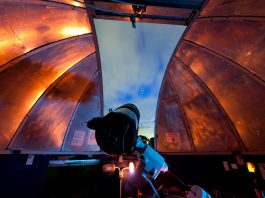Dr John Carpenter, Observatory Scientist at the Atacama Large Millimeter/submillimeter Array (ALMA), spoke to The Innovation Platform about the telescope’s past successes and its potential to further our understanding of our cosmic origins.
Located in northern Chile, ALMA (Atacama Large Millimeter/submillimeter Array) is the world’s largest ground-based facility for observations in the millimeter/submillimeter regime and the largest astronomical project in existence. Operated by European Southern Observatory (ESO) and its international partners, ALMA has 66 antennas in total, including an impressive array of 50, 12 metre antennas that can be configured to achieve baselines of up to 16km. It enables research into the physics of the cold Universe, probes the first stars and galaxies, and directly images the formation of planets.
The telescope has been operational since 2011, and in that time has made numerous exciting observations and has been integral in many ground-breaking discoveries.
The Innovation Platform spoke to ALMA’s Observatory Scientist, Dr John Carpenter, about the goals and achievements of the observatory, the impact of COVID-19 on observations, and what upgrades are planned for the future.
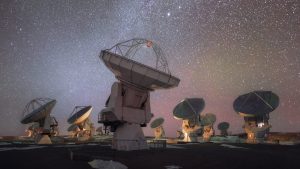
What are the main/central science goals for ALMA? How does the observatory compliment the other ESO telescopes and instruments? What makes it unique?
The very broad goal of ALMA is to study our cosmic origins, from the formation of galaxies and their evolution across cosmic time, to how stars and planets form. ESO’s optical and infrared telescopes have very similar objectives, but where those telescopes detect light from stars, ALMA studies the gas and dust that are the birthplace of stars.
They are therefore complementary, and that is why you see a lot of studies that use both ESO’s optical and infrared facilities and ALMA.
Are there other observatories or telescopes that do the same as ALMA? Do you compliment those outside of ESO’s own portfolio?
ALMA observes at submillimetre wavelengths and operates as an interferometer, where the individual telescopes observe a source at the same time. There are smaller interferometers located in France and Hawaii, and as well as single dish telescopes around the world which observe at the same wavelengths as ALMA. Many projects get started on these other facilities, and then are observed with ALMA to achieve better sensitivity and angular resolution.
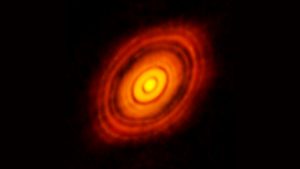
What is your main role at ALMA?
I have two main roles. In the first, I am responsible for understanding and promoting the needs of the scientific community for ALMA, and to then try to be the voice of that within the ALMA project. This is important because we have to balance the science needs, the engineering needs, and other operational considerations.
My other role involves promoting the scientific life within the observatory in Chile. We have a mixture of hardware engineers, software engineers, and of course, the astronomers themselves, amongst others. I help support the scientific activities, especially for the astronomers.
Since first light back in 2011, what have been some of the most outstanding achievements to come from observations at ALMA?
There have been numerous incredible observations, and I am sure everyone has their own favourites. For me, one of the most interesting has been the study of protoplanetary discs around very young stars – where planets are formed. In 2014, ALMA observed a young star called HL Tauri, which is about 450 light-years away. We found a series of concentric bright rings, separated by gaps in the disc of material left over from star birth. It was a spectacular image, and we think that these gaps and rings are tied to the formation of planets, although exactly how is still unknown. Furthermore, in subsequent observations with ALMA we have found may other discs with such gaps, so these gaps must be important in forming planets.
Another area that I find very interesting is our attempts to detect galaxies further and further back in time. In one such study, ALMA detected ionised oxygen in a distant galaxy called MACS1149-JD1. The galaxy has a redshift of 9.1, so when the Universe was only 500 million years old, and we are still trying to push even further back than that.
Another exciting event was the capturing of the very first image of a black hole. This was at the centre of the Messier 87 galaxy. The black hole is 55 million light-years from Earth and has a mass 6.5 billion times that of the Sun. This was achieved using a technique called Very Long Baseline Interferometry (VLBI), where ALMA observed Messier 87 simultaneously with other telescopes around the world.
Some time ago now, ALMA was also used to observe the glowing remains of Supernova 1987A, which is in the Large Magellanic Cloud, a dwarf galaxy orbiting the Milky Way about 160,000 light‐years from Earth. We were able to look at the dust being formed in the supernova remnant, and we were able to create a beautiful image of that.
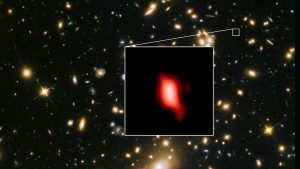
Given the significant amount of data to come from the observations, what techniques/infrastructure do you have in place to handle Big Data challenges?
We provide calibrated data products for astronomers. That is, rather than just providing the raw data, we calibrate it for them so that they don’t have to spend their time turning it into something that is usable. Of course, the users are still able to refine the data, should they wish or need to do so.
We also have a science archive that can be accessed over the web. The scientist who proposed to obtain the observations typically has exclusive access to the data for one year. But after that time period, the data become public and anyone can download the data and analyse it.
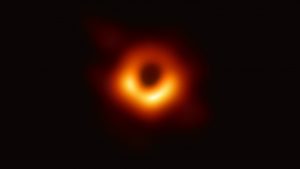
The COVID-19 pandemic has, of course, resulted in ALMA operations being suspended. How will this affect those who had scheduled observing time, and will it have a knock-on effect on future calls for proposals?
The way ALMA operates is that we have a queue, which is list of approved projects that we will attempt to execute over the upcoming year. Every year, we issue a call for proposals so that we can add new projects to the queue. Because we have suspended operations as a result of COVID-19, we decided to skip the call for proposals for 2020 and keep the existing projects in the queue for one additional year.
The knock-on effect therefore means that astronomers who want to propose new projects for the queue will now have to wait for an extra 12 months before they can propose to use ALMA. However, we do have what we call ‘Director’s Discretionary Time’, and so if there is a really compelling idea put forward then the proposal can be awarded observation time without waiting until next year. But that will be a very small fraction of the proposals we receive.
Of course, scientists who already have projects in the queue will need to wait until ALMA resumes operations before we can observe their sources and deliver the data. But perhaps more concerning is the fact that young researchers, and particularly students, will also face this delay which could have an impact on them being able to submit, for instance, a thesis and therefore delay completing their PhD.
Moving forwards – perhaps beyond the pandemic – what are your hopes for ALMA’s future?
We are always looking for ways to improve the instrument and to make it more powerful, and we have an ALMA development programme that enables us to continuously enhance ALMA’s capabilities.
The main goal for the upcoming decade is to upgrade the receivers and associated electronics so that we can observe a broader range of frequencies simultaneously. This will improve our sensitivity as well as enable us to look for many different molecule species at the same time. This is high priority for us in the coming decade.
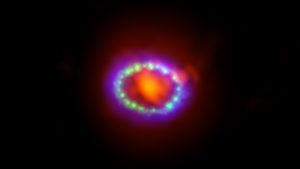
The production contract has been signed for the final set of band two receiver cartridges to be installed on ALMA. What do you hope the detection of wavelengths in the 2.6-4.5mm range will achieve, and when do you hope band two observations to begin?
There are a couple of bands that we would like to add that fill in some of the gaps we currently have in our frequency coverage. One is band two, and the other is band one. The band one element is now under construction, and the receivers were just starting to be delivered when the COVID-19 pandemic began, so that has now paused. It will be a few years before band two is fully ready to be offered since it takes time to build, install, and test the receivers on all the ALMA antennas.
One of the main science drivers behind band two is to observe transitions of deuterated molecules. These deuterated species are important because they are found in the densest and coolest regions of gas clouds, so we are essentially looking at the very initial phases of when stars form. This means we can gain a much better understanding of how this happens.
The second major science driver of the band two receiver is that this receiver will be able to probe the ground transition of carbon monoxide and other molecules in nearby galaxies. This will give us a much better understanding of the evolution of gas and galaxies over a broad range of redshifts and cover regions where we currently have a gap in our redshift coverage.
Dr John Carpenter
Observatory Scientist
The Atacama Large Millimeter/submillimeter Array (ALMA)
+56 2 2467 6100
john.carpenter@alma.cl
Tweet @almaobs
www.almaobservatory.org/en/home/
Please note, this article will also appear in the third edition of our new quarterly publication.



